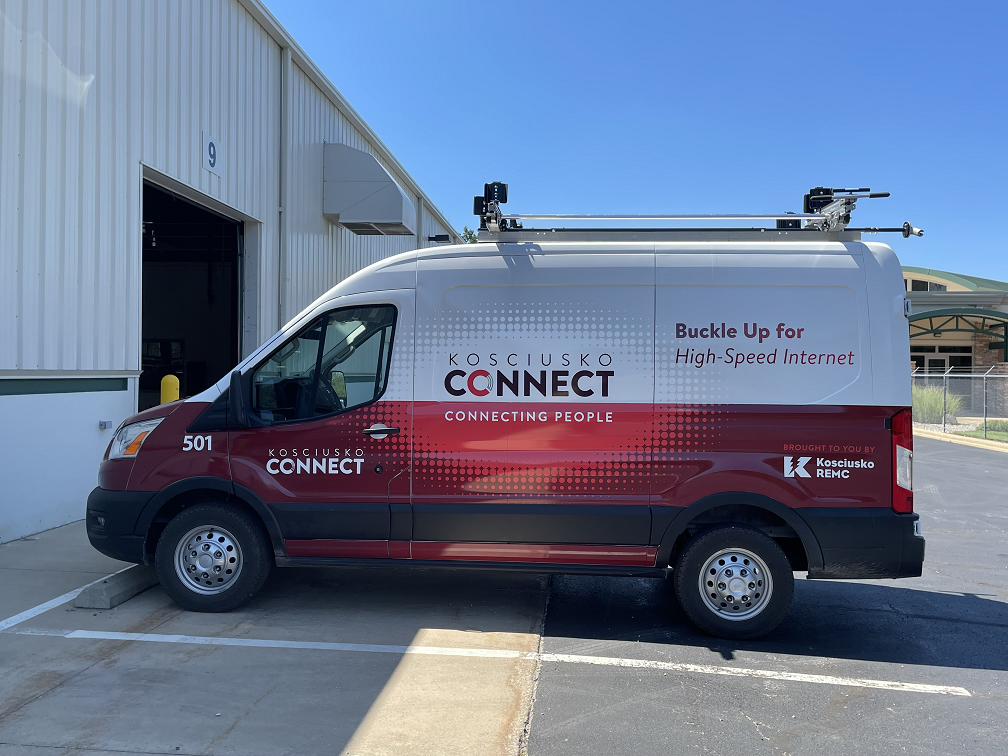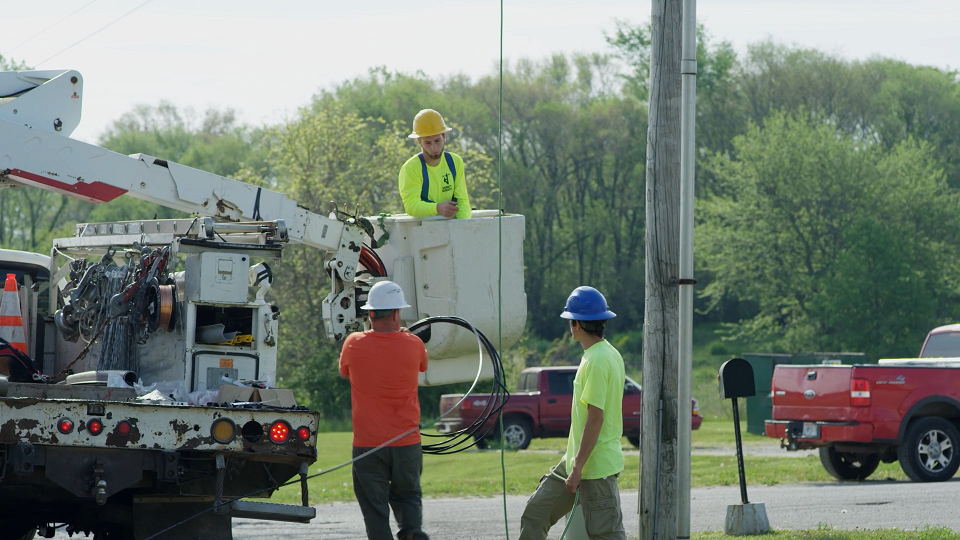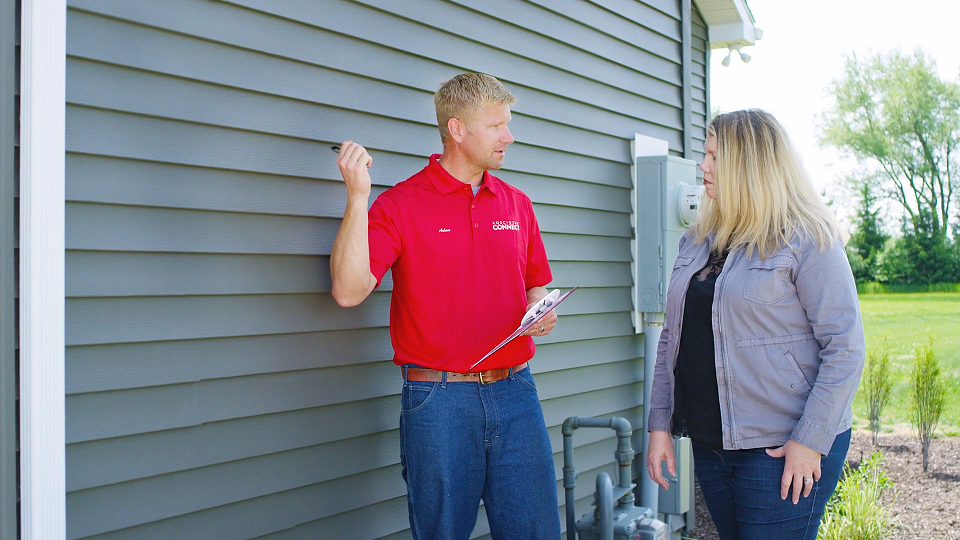Not All Fiber is Created Equal
General

![]() Posted by: Kosciusko Connect
2 years ago
Posted by: Kosciusko Connect
2 years ago
At Kosciusko Connect, we strive to be transparent and honest about our internet services. Some of our competitors are broadly advertising their internet service as “fiber internet” when there is a substantial difference between what they have to offer and what Kosciusko Connect provides. We know that, as a consumer, you want accurate, truthful information about the service you pay for. And we are happy to oblige. To understand what makes our fiber optic internet the superior service, it’s important to know the difference between our fiber and the other alternatives. We sat down with several knowledgeable members of our Kosciusko Connect team to explore current internet options and to discuss Fiber to the Home vs. Fiber to the Curb.

Broadband Operations Manager Rich Cinninger came to Kosciusko Connect less than two years ago with decades of experience in the telecommunications industry. During his career, Cinninger has seen internet technology progress from the inside. You might remember that DSL (Digital Subscriber Line) technology brought the first significant advancement towards high-speed internet to the industry. DSL utilized the same existing telephone lines dial-up internet did, but allowed simultaneous voice and data transmission, enabling quicker browsing and downloads. While it was an improvement over dial-up internet, Cinninger says from the beginning DSL had limitations, primarily due to distance from the central office. “With the original DSL services the limitations were definitely bandwidth, download speeds, and upload speeds were even worse. Another problem you get into when you’re dealing with old telephone cables is the fact that the network is very vulnerable to problems like water migration into the cables. Some of the copper cables out there have been in the ground or in the air for 30, 50 years. It’s very old technology.”
Cinninger said when the television cable industry started providing internet, they had some definite advantages. Cable internet technology utilized the same coaxial cables used for television signals and offered a significant improvement in download speeds compared to DSL. “With coax you could offer higher bandwidth,” Cinninger explained. “You still were very limited on your upload speeds, but you could offer a high download speeds.” According to Cinninger, traditionally the cable system was 100% coax with amplifiers. Because of service reliability issues over the years, the industry realized they needed to improve their network. Enter fiber optics. “We started deploying fiber optics into the network. That reduced the number of amplifiers you had in the network, increased reliability because you had less connections, and allowed the cable industry to increase their bandwidth as far as internet speeds go,” said Cinninger. “However, the portion of the network where the signal was running through cable was still very vulnerable to problems.”
When fiber optics first came into the picture, the technology was primarily used to carry telecommunications signals overseas. “The cable industry figured out that they could utilize the fiber optic technology that was being developed, run fiber in their system and improve reliability,“ said Cinninger. I actually spent a majority of my career in the cable industry and was involved in these system upgrades. Even though there were marked improvements in both industries as far as getting fiber deeper into the network to reduce the number of problems they had, both of those sectors still had limitations when it came to bandwidth. And not only that but you were still dealing with the copper from the cabinet out to the home. So, you still had places in the network that were very vulnerable to problems and reliability issues.”
This is where the true value of Kosciusko Connect’s 100% Fiber to the Home (FTTH) internet service becomes apparent. While some of our competitors broadly describe their internet service as “fiber,” what they provide is a Fiber to the Curb (FTTC) service. To break it down to basics, in a FTTC setup, the fiber optic cables extend up to a street cabinet or hub, also known as the curb. From there, the connection is switched to copper wiring, which carries the signal to individual homes or businesses.
While FTTC does utilize fiber optic cables for a portion of the connection, it still relies on slower copper wiring for the final leg. This compromises the overall performance of the internet connection. Copper wiring is more susceptible to signal degradation, distance limitations, and interference from external factors like electrical equipment or weather conditions. As a result, the promised high-speed capabilities of fiber internet are not fully realized with FTTC.

Kosciusko Connect Network Engineer Elias Ward said that it’s where the fiber ends that matters the most. “For things like DSL and cable, fiber will go to a curb or cabinet and stop. And then the last mile or few miles to your house are going to be coax or copper cable. And that’s where you’re going to see a huge amount of drop. So, you’ll get fiber all the way to that neighborhood, and it will be great speeds up until that point, and then you’ll see a huge difference in your speeds once you go from there to the house. “
FTTH, or fiber to the home, delivers what its name suggests—a direct fiber optic connection to your doorstep. In an FTTH setup like Kosciusko Connect’s, fiber optic cables are laid all the way from the internet service provider’s network to your home, ensuring an uninterrupted and fast internet experience. “That’s a big deal when you’re talking about from the cabinet to your house,” Ward continued. “The further away you are from that cabinet, the more of a drop you’re going to get. DSL customers know that very well. Especially for the ones who are at the end of the line. They’ll get very low speeds.”
Cinninger pointed out that at Kosciusko Connect, we take it one step further. “We’re deploying fiber optics to the home and we’re actually taking it inside. So, our equipment is being placed inside the home when the fiber optic modem is. That in itself also increases reliability overall.”
Like many of us, VP of Technology and Broadband Curt Barkey has lived through various waves of internet technology in his home over the years. Barkey has seen the difference in the Kosciusko Connect fiber internet service firsthand in his day-to-day life.
“I lived out in the country, and I had DSL. Then I got cable and that has more bandwidth, and it does what it needs to do. And then, to see the first ONT (Optical Network Terminal) we connected and to see those speed tests… I’d never seen anything like it before.” Barkey reiterated that limitations exist with DSL or cable internet options, even if fiber is part of their components. “If you were to do a speed test with one of the big guy’s ‘Gigabit Internet Service,’ you will not see the speeds we get. It’s not even possible.”
Is there a downfall to fiber? Barkey doesn’t think so.
“I don’t see one. This is why people and co-ops are putting in fiber and they’re not doing a combination. And if they are doing a combination, they’re doing wireless because it’s too expensive to build fiber to those locations for a specific reason; maybe it’s terrain, maybe there are not enough homes per mile. That’s the great thing about fiber. The fiber optic itself that is out in the field will be there for thirty-some years. It will handle any capacity that we want to do. So, if we decide at some point in time that we want to offer a 2-gig residential service, we don’t need to change the fiber. All we need to do is change technology in the hut. From what I know, there is no reason why you wouldn’t want fiber. Everybody’s building fiber.”
It’s true that nearly everybody is building fiber. But not all fiber is created equal. When choosing an internet service provider, it’s crucial to look beyond the misleading marketing claims and understand the technology being offered. While FTTC may be marketed as “fiber internet,” it falls short of the superior performance and reliability that Kosciusko Connect FTTH delivers. And let’s not forget that when you choose Kosciusko Connect, you are choosing to keep your hard-earned money in a local enterprise. And that’s huge, according to Cinninger.

“Even though the competitors are going to continue to work on deploying fiber deeper into the networks, one thing will make us stand apart from any competitors out there: We are local, 100% of our employees are local, and our office is local. Customers will have service issues. It’s inevitable with this type of network. But the good thing is if we do have a problem, we are pretty much able to respond within 24 hours. A lot of the time we’re responding within 6 hours, and sometimes quicker than that, “said Cinninger.
With Kosciusko Connect, you can unlock the full potential of high-speed fiber internet, enabling seamless streaming, gaming, and productivity. And you are choosing to support a local business in your community. If you want to future-proof your internet connection and elevate your online experiences, opting for genuine FTTH through Kosciusko Connect is the smart choice to make.
Categories:
About: Kosciusko Connect
You May Be Interested In:

How Does Arlo AI-Powered Motion Detection Work?
4 months ago by Laura Seney

Top 5 Things to Look for in a Security Camera System
6 months ago by Kosciusko Connect

The Future of Connectivity: Why Fiber Internet is Revolutionizing Warsaw, Indiana
8 months ago by Kosciusko Connect

Easter Coloring Contest
1 year ago by Kosciusko Connect
Ready to Get Connected?
Do you have questions or need assistance? Our customer service team is just a call or click away. Contact us today for personalized help!